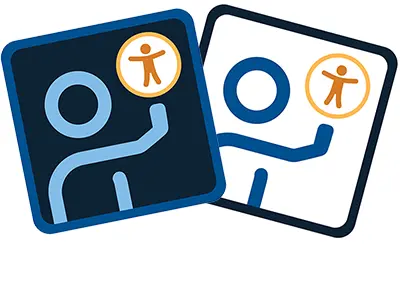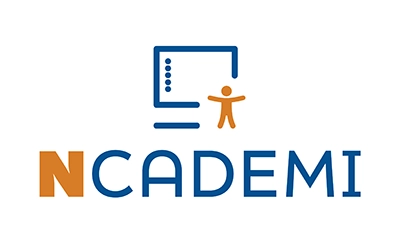
Both sets of Quality Indicators include seven indicators that describe exemplifying conditions for creating and sustaining a statewide system for providing accessible materials. Critical Components serve as action items toward achieving the conditions of each Quality Indicator.
Each set is distinguished by notation: ‘DM’ for the Quality Indicators for Accessible Digital Materials and ‘AF’ for the Quality Indicators for Accessible Formats.
Key Foundations for Implementation
To get the most out of the Quality Indicators, it’s helpful to start with a few foundational principles (Shaheen & Curry, 2023; Shaheen, 2024):
- Use of the Quality Indicators requires a coordinated team approach. At all stages of use, collaboration must be continuous and ongoing.
- High-level agency leadership is critical to successful implementation of the Quality Indicators. The need for changes to an agency’s system will be inevitable, requiring authority and timely decision making.
- Within each set, the Quality Indicators are interdependent. The successful implementation of any individual Quality Indicator is dependent on at least some components of the others. Teams are advised to take a holistic rather than linear approach to their use.
Adapting to Your Setting
Readiness to adopt the Quality Indicators varies across educational agencies, education structures, and models of school systems. Administrators and educators within the U.S. territories, charter schools, tribal schools, virtual schools, etc., will benefit from taking the time to selectively adapt the Quality Indicators to their context. For help prioritizing the best path for your setting, compare the distinctions between the sets of Quality Indicators and explore the Decision-making Guide.
For teams ready to put the Quality Indicators into action, additional tools are available. Our Implementation Resources include both a Readiness Protocol, which helps agencies assess fit and feasibility, and the Self-Assessment Tool, which supports ongoing evaluation and improvement.
References
Shaheen, N. L. (2024). Getting unstuck: How a few determined educators strategically and serendipitously advanced accessible educational materials. Lynnfield, MA: National Center on Accessible Educational Materials at CAST.
Shaheen, N.L., & Curry, C. (2023). A southern story: Providing accessible educational materials. Lynnfield, MA: National Center on Accessible Educational Materials at CAST.
